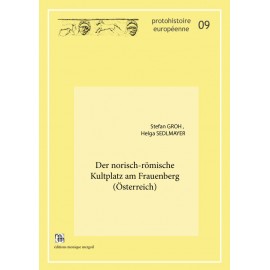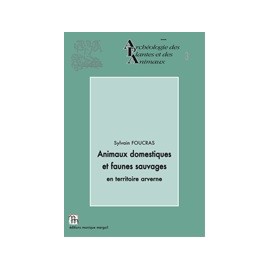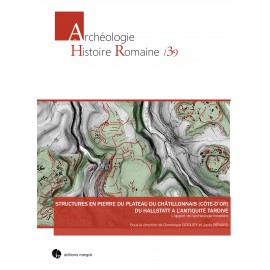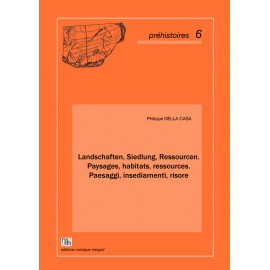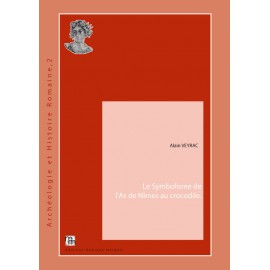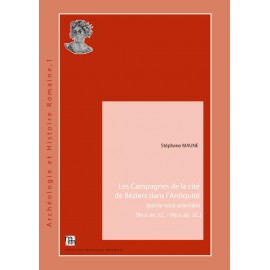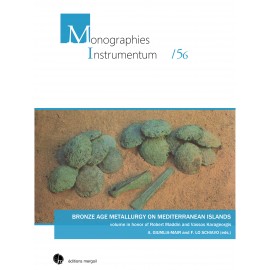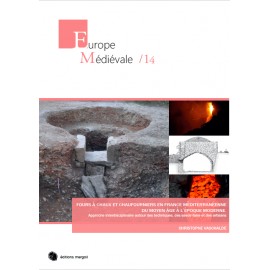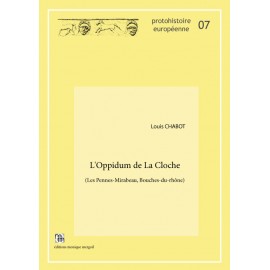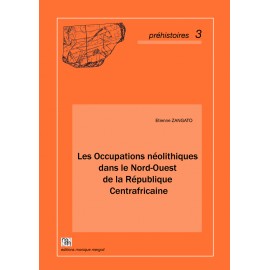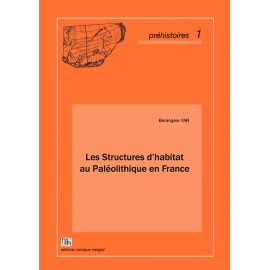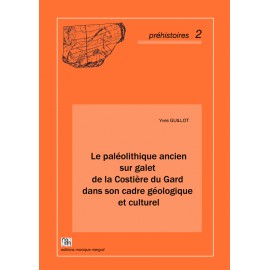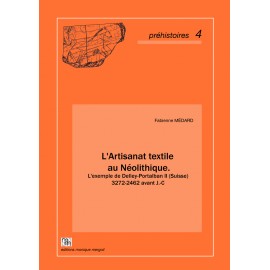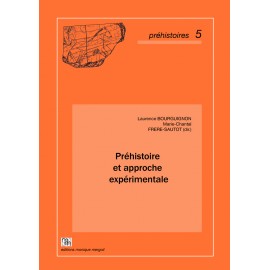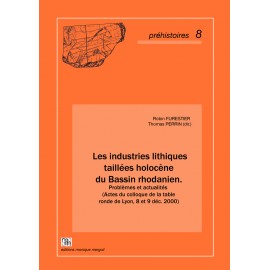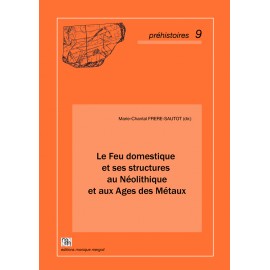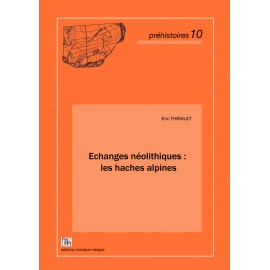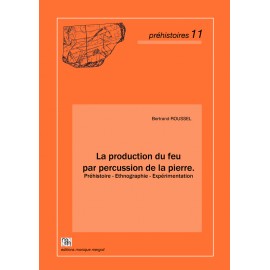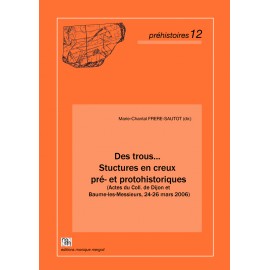Cart 0 Product Products (empty)
No products
Free shipping! Shipping
0,00 € Tax
0,00 € Total
Prices are tax included
Product successfully added to your shopping cart
Quantity
Total
There are 0 items in your cart. There is 1 item in your cart.
Total products (tax incl.)
Total shipping (tax incl.) Free shipping!
Tax 0,00 €
Total (tax incl.)
Préhistoires
- Archéologie et Histoire Romaine
- Archéologie Moderne et Contemporaine
- Archéologie des Plantes et des Animaux
- Archéologie du Paysage
- Archives & Histoire de l'Archéologie
- Europe Médiévale
- Monographies Instrumentum
- Préhistoires
- Protohistoire européenne
- Research Protocols
- Off collections
- Les cahiers de saint-michel de Cuxa
- Second-hand
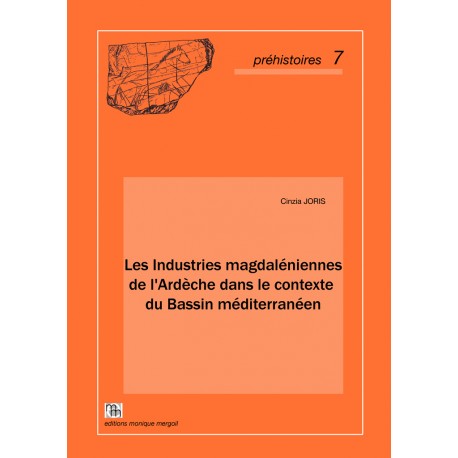 View larger
View larger Les Industries magdaléniennes de l'Ardèche dans le contexte du Bassin méditerranéen.
PRE-07
New
Cinzia JORIS - Les Industries magdaléniennes de l'Ardèche dans le contexte du Bassin méditerranéen,(préf. Jean Combier), 2002, 156 p., 81 fig., 13 tabl. (ISBN: 2-907303-67-8)
More info
This research report reassesses the Magdalenian evolution in the Ardèche, from its first appearance up to the Epipalaeolithic. Industries from numerous caves in the Ardèche are examined both technologically and topologically, and are compared with those of other Magdalenien sites in southern France.
The evolution of the Magdalenian in the Ardèche differs from the classical pattern defined in the south-west. The Bagdegoulien culture is absent, and the local blade-rich Solutrean is succeeded by the Mediterranean-style Salpetrien, characterised by an idiosyncratic piercer. The Salpetrian is replaced at some sites by an intermediate style, consisting of Salpetrian elements mixed with Magdalenian small backed blades. The Magdalenian culture itself is clearly characterised by the dihedral burin and small backed blades, and occurs in the Blanchisserie encampment in a almost fully glacial climate. This early Magdalenien develops into the full Magdalenien, dated by the Colombier rock-shelter to around 14,000 BP. The Magdalenian continued to develop at this site, where six levels have been identified, the oldest being characterised by debitage from blade production and a preponderance of small backed blades and dihedral burins. By 13,000 BP the debitage consists mainly of larger rolled products, and scrapers as well as burins. With the climate once again very cold, round about 12,700 BP, Azilian traits appear in the Magdalenian, backed points and short scrapers.
This development is matched on many sites in the Rhône corridor across to Switzerland, suggesting the existence of an homogenous cultural province, surviving until the end of the Palaeolithic, with Ardèche on its southern edge. The final part of the Ardèche Magdalenian, dated to around 12,150 BP, shows southern influence with the introduction of large retouched blades, which developed on the Mediterranean coast. In spite of the early appearance of Azilian flint types, Magdalenian products never completely disappeared in the Ardèche industries, and the Azilian proper is absent. Whereas the Epimagdalenian in the Pyrenees gradually develops into the Azilian, in the Ardèche it appears to have been completely replaced. Only further research into the Epipalaeolithic sites of the region will resolve this question.
The evolution of the Magdalenian in the Ardèche differs from the classical pattern defined in the south-west. The Bagdegoulien culture is absent, and the local blade-rich Solutrean is succeeded by the Mediterranean-style Salpetrien, characterised by an idiosyncratic piercer. The Salpetrian is replaced at some sites by an intermediate style, consisting of Salpetrian elements mixed with Magdalenian small backed blades. The Magdalenian culture itself is clearly characterised by the dihedral burin and small backed blades, and occurs in the Blanchisserie encampment in a almost fully glacial climate. This early Magdalenien develops into the full Magdalenien, dated by the Colombier rock-shelter to around 14,000 BP. The Magdalenian continued to develop at this site, where six levels have been identified, the oldest being characterised by debitage from blade production and a preponderance of small backed blades and dihedral burins. By 13,000 BP the debitage consists mainly of larger rolled products, and scrapers as well as burins. With the climate once again very cold, round about 12,700 BP, Azilian traits appear in the Magdalenian, backed points and short scrapers.
This development is matched on many sites in the Rhône corridor across to Switzerland, suggesting the existence of an homogenous cultural province, surviving until the end of the Palaeolithic, with Ardèche on its southern edge. The final part of the Ardèche Magdalenian, dated to around 12,150 BP, shows southern influence with the introduction of large retouched blades, which developed on the Mediterranean coast. In spite of the early appearance of Azilian flint types, Magdalenian products never completely disappeared in the Ardèche industries, and the Azilian proper is absent. Whereas the Epimagdalenian in the Pyrenees gradually develops into the Azilian, in the Ardèche it appears to have been completely replaced. Only further research into the Epipalaeolithic sites of the region will resolve this question.



